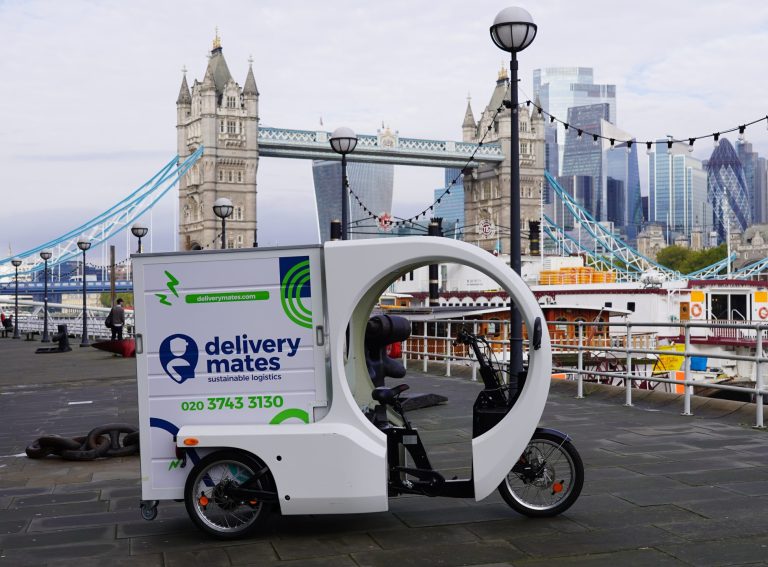The big screen projector shows an e-bike leaning against a wall in a block of flats before flashing into a red explosion.
On the doorstep of his London flat, the e-bike owner is seen running back into his home.
“The owner was just going back into his flat to get his keys,” Rob Hill, London Fire Brigade Station and Fire Investigation Officer, tells the lecture theatre room. “So he narrowly escaped the burst of flames.”
On average, a lithium battery fire took place every two days in London in 2023. London Fire Brigade attended 143 e-bike fires and 36 e-scooter fires, resulting in three deaths.
At last week’s Micromobility UK expo hosted by WMG in Warwick, industry leaders gathered to discuss what manufacturers and policymakers can do to improve battery safety.

3 main causes of thermal runaway
James McLaggan, WMG’s Principal Engineer in Battery Systems Engineering, sets out the three main causes of thermal runaway (or a cell overheating).
“There’s mechanical use which means physical damage to the cell of the battery,” James says. “This could be from performing stunts with e-scooters in a skate park for example which damage the bottom of the chassis.
“There’s electrical use – typically when the cell overcharges or discharges. And there’s thermal use, like leaving the battery next to a radiator or source of heat that leads it to become overheated.”
On a chart presented at the event, the battery energy of various applications were ranked in ascending order, from smart watches all the way up to grid storage. The use cases in the lower half (like smart watches, smartphones and laptops) are typically charged at home and regulated via the Consumer Product Safety Legislation and Standards. Applications in the upper half (like electric cars, and electric lorries) are typically charged outdoors and require Type-Approval or Industrial or Workplace Legislation.
Falling in the middle of the two categories are e-bikes.
“E-bike and e-scooter batteries have probably the highest energy content of consumer products that are to be charged at home, and this contributes to the fact that we’re seeing some very serious incidents.”
James outlined design and manufacturing issues that are a cause for concern in battery cells. These include poor welding quality and unsupported wires, inconsistent markings with manufacturing data, sharp edges adjacent to wires and an absence of hardware redundancy.
“What do I mean by a lack of hardware redundancy? I mean that the severity of battery failure is so high that you can’t afford for the battery to be vulnerable to single points of failure. You must make sure that if one component fails, the battery still remains safe and that applies to both the hardware and the software.
“Having redundancy, or backup systems, is absolutely essential.”
James also flags battery cells that don’t feature temperature sensing. “It’s essential that the battery management system must be able to detect electrical and thermal abuse through electrical and temperature sensing,” he says. “And yet some batteries in e-mobility products don’t have these sensing capabilities, so the battery system is incapable of detecting certain failures.”
Sam Bernard, Director of Engineering at sustainable last mile provider EAV, says what’s needed from the product development side.
“As a product developer, you should be worried about your product,” he says. “Those few weeks before you go into the market should be sleepless. We saw from Rob’s video just how powerful a battery can be – it’s an awful lot of energy stored in one place and that can be dangerous.
“But if you have all the right processes in place, it shouldn’t be dangerous. The risk to the user should be miniscule. I keep my mobile phone right here in my front pocket. If I was really worried about lithium ion batteries that would be the last place I’d keep it, but batteries can be safe.”
Sam, who helped launch Dyson’s battery powered hair straightener when he was the company’s Head of Commercial Product Development, calls for extensive research and development with the production of battery cells. At Dyson for example, Sam says that after a long series of tests every single product would enter a bunker for intense testing of their safety.
“It’s a difficult and lengthy process,” Sam says. “Now compare that with someone buying a product with a battery on eBay and putting it together in a shed.
“Suddenly you can see how easy it is to not have all those layers of testing and design which make sure you have multiple detections and considerations of what could happen. If you don’t have that protective consideration, then you have serious problems.”
Proposed solutions
Peter Eland, Technical Manager at the Bicycle Association of Great Britain, set out partial solutions to two associated issues of battery safety: stopping the fires and supporting the reputable e-bike industry.
He firstly flagged that high risk products, such as conversion kits, which are largely used in the gig economy overwhelmingly come from overseas.
“That is incredibly difficult to stop,” he says and calls for the government to address both the supply and demand for high-risk items to reduce fire incidents. “It’s particularly important for the government to address demand, because it’s so hard to address supply which needs picking out from millions and millions of postal parcels coming in from China directly to UK consumers every day.”
Peter says the government must require gig economy delivery operators to provide safe e-bikes for their riders. “We don’t need to be demonising or imposing burdens on the riders themselves. They are already economically marginal and are doing their best to make a living. It’s the operators who are in a position to provide safe equipment and this requires political will.”
A second problem is that reputable suppliers and retailers are often hit by blanket restrictions, and Peter says the industry must create mechanisms to help users, premises, managers and insurers distinguish the safe products from the unsafe products.
Last month, the UK cycling sector launched the ‘E-bike Positive Campaign’ which the Bicycle Association, Cycling UK, the Association of Cycle Traders and Bosch eBike Systems are all members of. The purpose of this campaign is to boost safety knowledge and combat misinformation which leads to battery fears.
Cycling UK Senior Policy Officer Monica Scigliano told the panel: “We came together because of a central concern which is that battery fires and misinformation have put people off of using e-bikes, and they don’t know how to differentiate between safe and unsafe products.”
The campaign supports a UK cycling industry reputable supplier scheme, highlighting e-bike brands that have thoroughly tested their e-bikes and batteries, and it will share educational resources with consumers, media, bike shops and mechanics.
“It is possible to make safe e-bike batteries,” James tells the panel. “At WMG, we’ve tested batteries from e-bikes and e-scooters that have been exceedingly difficult to provoke into a thermal runaway incident, even with extreme use. So there are examples of very good products out there, and it requires high design and manufacturing quality.
“My final point is this: Consumers must not have to think about safety when buying micromobility batteries – that’s a given. The quality of the products in the market should meet the aspiration that consumers can make purchase decisions based on issues entirely unrelated to the safety of the product they’re buying.”





